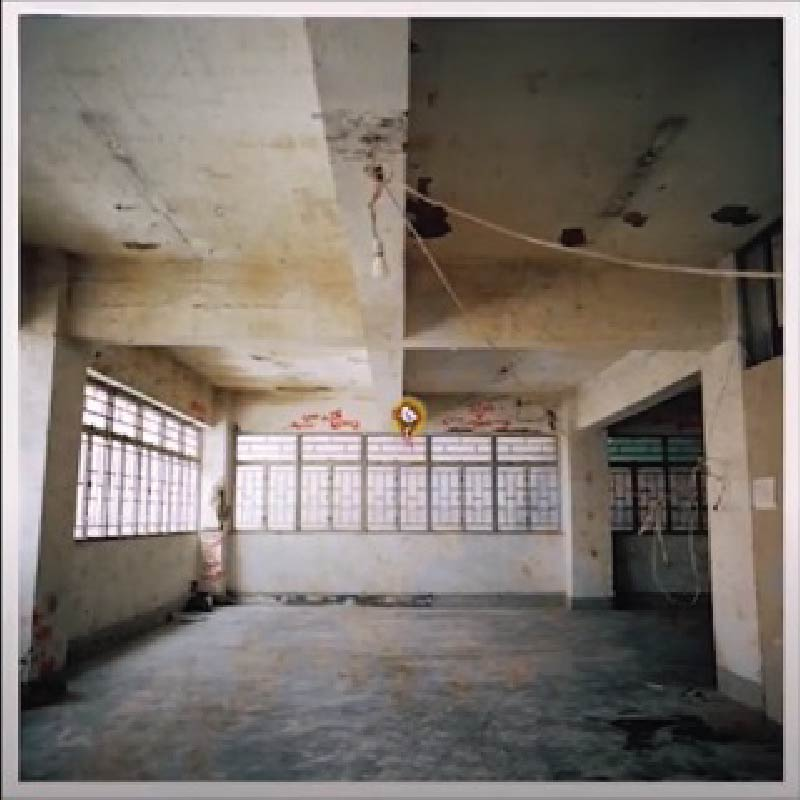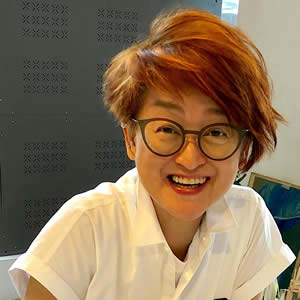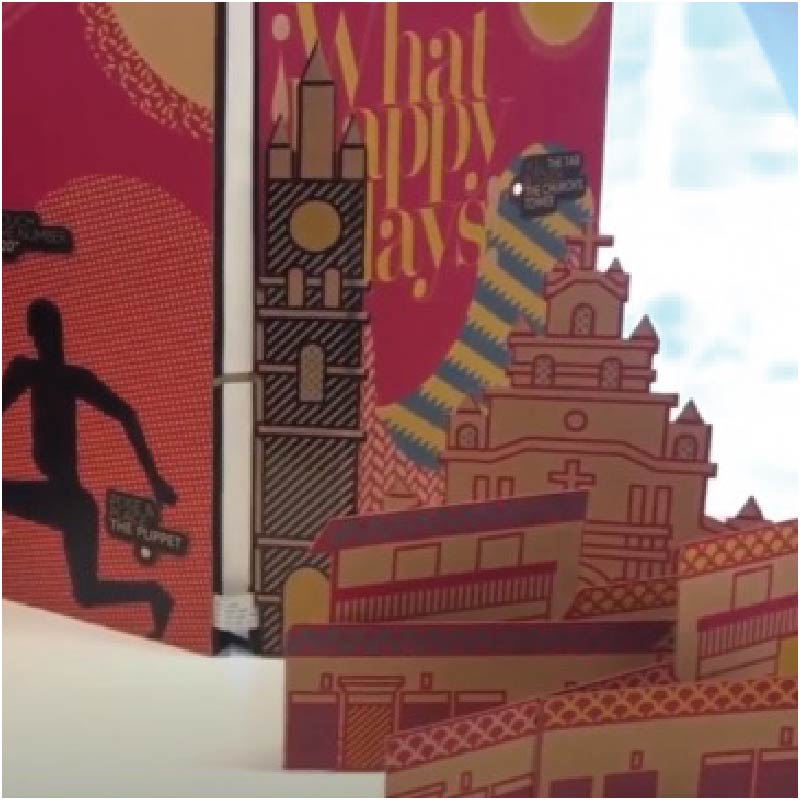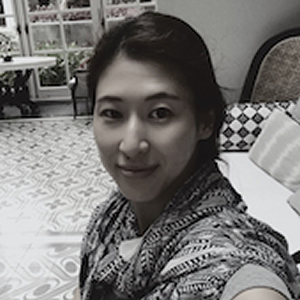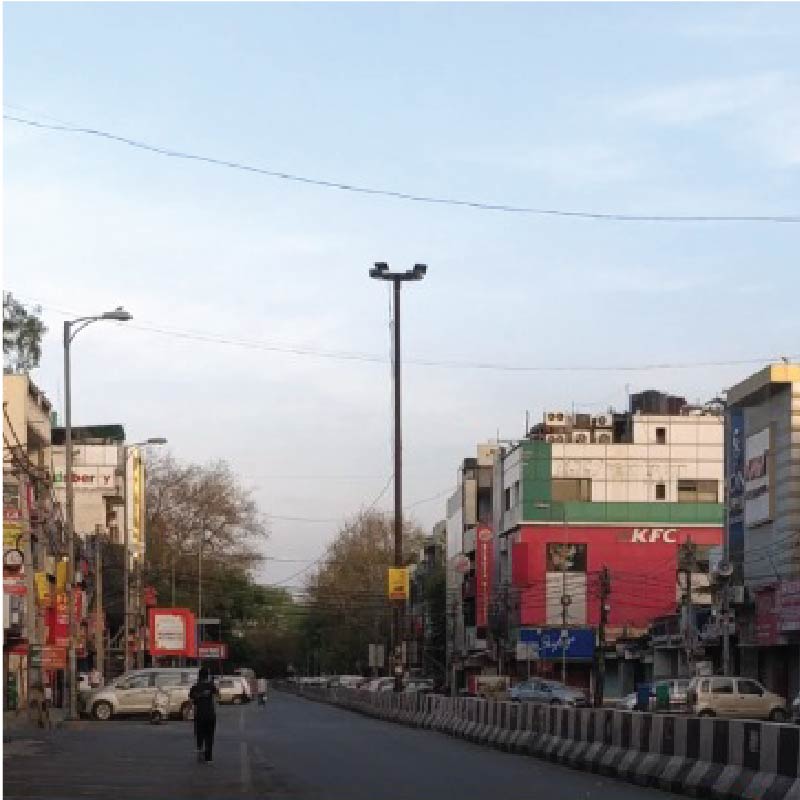The Found Image has traditionally been accidentally discovered. It exists because it was noticed and deemed worthy of attention. However, the found photo is an altogether uncertain object. It holds a multitude of potential meanings, investing each person to bring their own meaning to it. It has the potential to reveal to the looker their own predispositions, their own habits of looking. This work employs the concept of found photographs and extends it towards the field of design. Traditionally, designers have tried to mitigate the risk of encountering such ambiguity of meaning and use. Therefore, my research investigates the increasingly uncertain way that photographs exists in the world, and how they invite meaning- making from the world around us. With so much revealed y photographs, emus also ask what is concealed as a result. Therefore, I ask you to show me something unseen. Let’s see what becomes found. To start, here are some pretty photos of the already found.
Tacit knowledge, as it is well-known, is inherent and embedded in the act of design. Yet, it is this intrinsic nature that makes it challenging to articulate and acquire in design education. Spatial understanding as a component to tacit knowledge in interior design is an area that is not fully investigated. This explorative research aims to study interior design students’ process of tacit knowledge acquisition in the context of the interior design studio. Constructivist theories were applied to obtain a holistic understanding of tacit knowledge construction through three perspectives of teaching, learning and studio interactions. The position of design as a dialogue, and Donald Schon’s reflective Practice theory served asa basis for the inquiry.
Tacit knowledge, as it is well-known, is inherent and embedded in the act of design. Yet, it is this intrinsic nature that makes it challenging to articulate and acquire in design education. Spatial understanding as a component to tacit knowledge in interior design is an area that is not fully investigated. This explorative research aims to study interior design students’ process of tacit knowledge acquisition in the context of the interior design studio. Constructivist theories were applied to obtain a holistic understanding of tacit knowledge construction through three perspectives of teaching, learning and studio interactions. The position of design as a dialogue, and Donald Schon’s reflective Practice theory served asa basis for the inquiry.
This research aims to investigate children’s conception of and behaviours during a design process for implications on future pedagogies in creativity development. A mixed methods approach was adopted for a three-part empirical study on how children conceived design (1057 research subjects); their design process as co-experienced by their parents (10 families); and their behaviour during an adult-non-directed design task (nine 9-year-old children). Findings reveal that children conceive design as both a process (constructive and social) and a product (with specific purpose); and as human efforts to alter and anticipate changes for desired results. Children’s design processes are individualised (uniquely different from each other); improvised (playful, concurrent and in an intuitive combination of 2D/3D making, thinking aloud and testing); and ideating with hands (children’s preferred way to generate ideas is to ‘think-while-tinker’ with tangible materials through 3D Make/Model).
This research aims to investigate children’s conception of and behaviours during a design process for implications on future pedagogies in creativity development. A mixed methods approach was adopted for a three-part empirical study on how children conceived design (1057 research subjects); their design process as co-experienced by their parents (10 families); and their behaviour during an adult-non-directed design task (nine 9-year-old children). Findings reveal that children conceive design as both a process (constructive and social) and a product (with specific purpose); and as human efforts to alter and anticipate changes for desired results. Children’s design processes are individualised (uniquely different from each other); improvised (playful, concurrent and in an intuitive combination of 2D/3D making, thinking aloud and testing); and ideating with hands (children’s preferred way to generate ideas is to ‘think-while-tinker’ with tangible materials through 3D Make/Model).
This research explores the role of design support change now and transformation for the longer term in a way that is both healthy for humanity, society and nature: as it is nature that provides our living conditions and these are being devastated. This leaves in question the survival of humanity. This research considers an alternative industrial model, that of the circular economy as the basis to transition towards different ways of living and working. in this project the relationship of our foos system is explored as it has been proven that the current way we grow, process, transport our foods, as well as our understanding of what foods are beneficial for us and our environments in also broken: leading to high incidence of health related issues as well as some 40% of all foods grown being wasted: a monumental needless toll on our environment and out personal health. What we eat is directly linked to the health of our environments which support our lifestyles as we know them today.
My research examines how physical artifacts can support the interactive process of engaging with a narrative and the motives, factors, and mechanisms that lead to its enjoyment. It contributes a fully implemented design case, Letter to Jose, to the repository of interactive digital narratives and the limited body of works of tangible narratives. Letter to Jose is an interactive non-linear narrative inspired by the exchange of letters between two brothers: Jesus-a young medical student-and Jose-an air recruit. In a physical/ digital hybrid form, Letter to Jose is presented as three interactive, physically unfolding story worlds that combine unique paper mechanisms with different visual, performative, ad auditory modes. Finally, my work contributes towards an authoring model that considers the relationships between physical artifacts, their characteristic and functions in the experience, and how the narrative structure affords the intervention of physical manipulation.
As social media has played an important role during recent societal events such as political campaigns and movements such as Black Lives Matter, it becomes necessary that social media provides a safe and responsible environment. This research aims to propose design interventions that can induce users’ socially responsible behaviour in social media/ By adopting approaches of design for behaviour change, this study focuses on three areas: (1) protecting privacy, (2) raising awareness, and (3) controlling abuse. Specifically, this research has three research questions: (1) what are the key principles and interventions to induce socially responsible behaviour? (2) what are user’s needs and implications around those key interventions? (3) how effective is each of those interventions? To investigate the answers, three studies have been conducted. The first study was service research and expert review. The second study consists of iterative series of participatory design workshops. For the last study, user diary and quantitative analysis will be conducted. The outcome of this study will be sets or prototyping and guidelines around the three areas.
As social media has played an important role during recent societal events such as political campaigns and movements such as Black Lives Matter, it becomes necessary that social media provides a safe and responsible environment. This research aims to propose design interventions that can induce users’ socially responsible behaviour in social media/ By adopting approaches of design for behaviour change, this study focuses on three areas: (1) protecting privacy, (2) raising awareness, and (3) controlling abuse. Specifically, this research has three research questions: (1) what are the key principles and interventions to induce socially responsible behaviour? (2) what are user’s needs and implications around those key interventions? (3) how effective is each of those interventions? To investigate the answers, three studies have been conducted. The first study was service research and expert review. The second study consists of iterative series of participatory design workshops. For the last study, user diary and quantitative analysis will be conducted. The outcome of this study will be sets or prototyping and guidelines around the three areas.
I am interested in how community-specific narratives ad art practices whose aim is to serve communities can be better aligned for bottom-up community organisation. In order to understand the social mechanism of narratives and art practices specific to communities, the idea of “small stores” becomes crucial. Small stories are small talks happening in fleeting moments, which are nor freestanding, nor can be seen asa self-contained unit of narrative. However, they are heavily relevant to the immediate surroundings. It is in these particular characteristics and frames of all stories that I search ways for narratives and art practices to facilitate more effective and authentic social impact, and ultimately re-structuring of communities. As the unforeseen pandemic disturbs the livelihood and forces us to change our boundaries, the idea of community is reassessed. What sort of community do we want to live in? how can the new ways of organising community be practiced?
I am interested in how community-specific narratives ad art practices whose aim is to serve communities can be better aligned for bottom-up community organisation. In order to understand the social mechanism of narratives and art practices specific to communities, the idea of “small stores” becomes crucial. Small stories are small talks happening in fleeting moments, which are nor freestanding, nor can be seen asa self-contained unit of narrative. However, they are heavily relevant to the immediate surroundings. It is in these particular characteristics and frames of all stories that I search ways for narratives and art practices to facilitate more effective and authentic social impact, and ultimately re-structuring of communities. As the unforeseen pandemic disturbs the livelihood and forces us to change our boundaries, the idea of community is reassessed. What sort of community do we want to live in? how can the new ways of organising community be practiced?
Academic terminology can be overwhelming to novice researchers. One website that helped me to get started was SAGE research methods. This poster portrays multiple terms and their parent-child relationships, as I saw the on the site on July 2020.
The peripheries of society hold the capacity to transform their limited resources and barriers into settings for various kinds of opportunities. This study engages with the multi-disciplinary research focusing on gender, social exclusion (inequalities) and urban peripheries through the lens of (informal) mobility in order to reveal the inter-relationship between them. In the context of emerging countries, mobility and social exclusion is most visible in the case of women who live in urban peripheral areas and experience restriction on their movement because of social, cultural and economic issues. More specifically, it seeks to investigate into daily mobilities of urban marginalized women to recognize mobility as capability.
This research uses a combination of new technologies along with mobile methods like ethnography to reveal the inter-relationship between social and spatial mobility of urban marginalized women. Digital ethnography (GPS technology) is used to understand the daily mobilities of the respondents. Informal interviews before and after the GPS stage help to reveal the aspects of socio-spatial reproduction.

